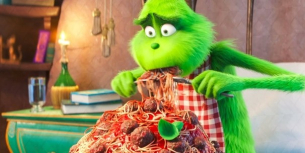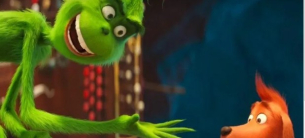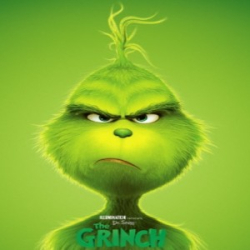Reviving a Christmas Misanthrope for New Audiences
The Grinch, a character enshrined in the holiday canon as the curmudgeonly cave-dweller with a heart "two sizes too small," has been immortalized in various media adaptations since Dr. Seuss first introduced him to readers in 1957. This mean-spirited hermit, infamous for his disdain for Christmas, has undergone several transformations. From the classic 1966 animated special that captivated television viewers, to the lavish 2000 Jim Carrey live-action portrayal, the Grinch's story has been retold to match the tastes of evolving generations. Yet, the essence of his tale remains a potent reminder of the redemptive power of community and the spirit of Christmas.
The animated adaptation in question brings the Grinch into the modern age, animated in a style that honors both the whimsy of Seuss's original drawings and the high-paced humor contemporary audiences appreciate. This deeper dive into the Grinch's psyche aims to provide context to his cantankerous nature while also hoping to captivate both young viewers and seasoned fans of the original tale.
The Green Recluse's Evolution in Animation and Plot
In its latest incarnation, the Grinch is given a polished, digitally-animated makeover courtesy of the team behind "Despicable Me." The visuals pop with Seussian vibrancy, a significant upgrade from the original animations and certainly a departure from the more live-action-oriented turn at the turn of the millennium. The depiction of Whoville is especially enchanting, with the town's festive decorations presenting a stark contrast to the barren expanse surrounding the Grinch's mountaintop abode.
However, in expanding the brief narrative of a children's book to a full-length feature, the film necessarily introduces additional plot elements and character development. Some may find these additions superfluous, feeling they bloat the concise original tale. Scenes like the backstory of the Grinch's orphanage upbringing or Cindy Lou Who's plot to ensnare Santa, though adding depth, might shift focus from the central theme of transformation that is intrinsic to the Grinch's story.
Moreover, purists and fans of the original may take issue with some of the modernizations, such as the film's contemporary soundtrack, which melds traditional Christmas tunes with modern renditions. While these elements are executed with undeniable quality, they may not resonate with those who hold the original's mid-20th-century stylings dear.
The Heartwarming Verdict from Viewers
Despite deviations and updates, viewers, both young and old, have embraced the Grinch's latest outing with open hearts. The core message—that Christmas is a time for compassion, community, and connection—channels through with flying colors, often leaving audiences with their hearts feeling just a bit larger. Particularly notable is the way the Grinch's eventual epiphany, borne out of generosity from those he once spurned, manages to resonate even in this high-tech depiction, proving that the story's heart beats strongly regardless of the medium.
While some critique the pacing and detail as diverging from Dr. Seuss' succinct storytelling, the film has been lauded for its stunning animation, dynamic voice performances, and humor that connects across generational lines. A testament to its success is its establishment as a holiday viewing staple alongside the 1966 original, which speaks volumes about its capacity to perpetuate the timeless tale's legacy. Reviews often reflect an appreciation for the film's ability to bridge the gap between nostalgia and modernity—a feat not easily accomplished in today's media landscape. The Grinch cartoon, flawed it may be in the eyes of some, stands as a vibrant, heartwarming addition to the Christmas movie tradition."
Screenshots









